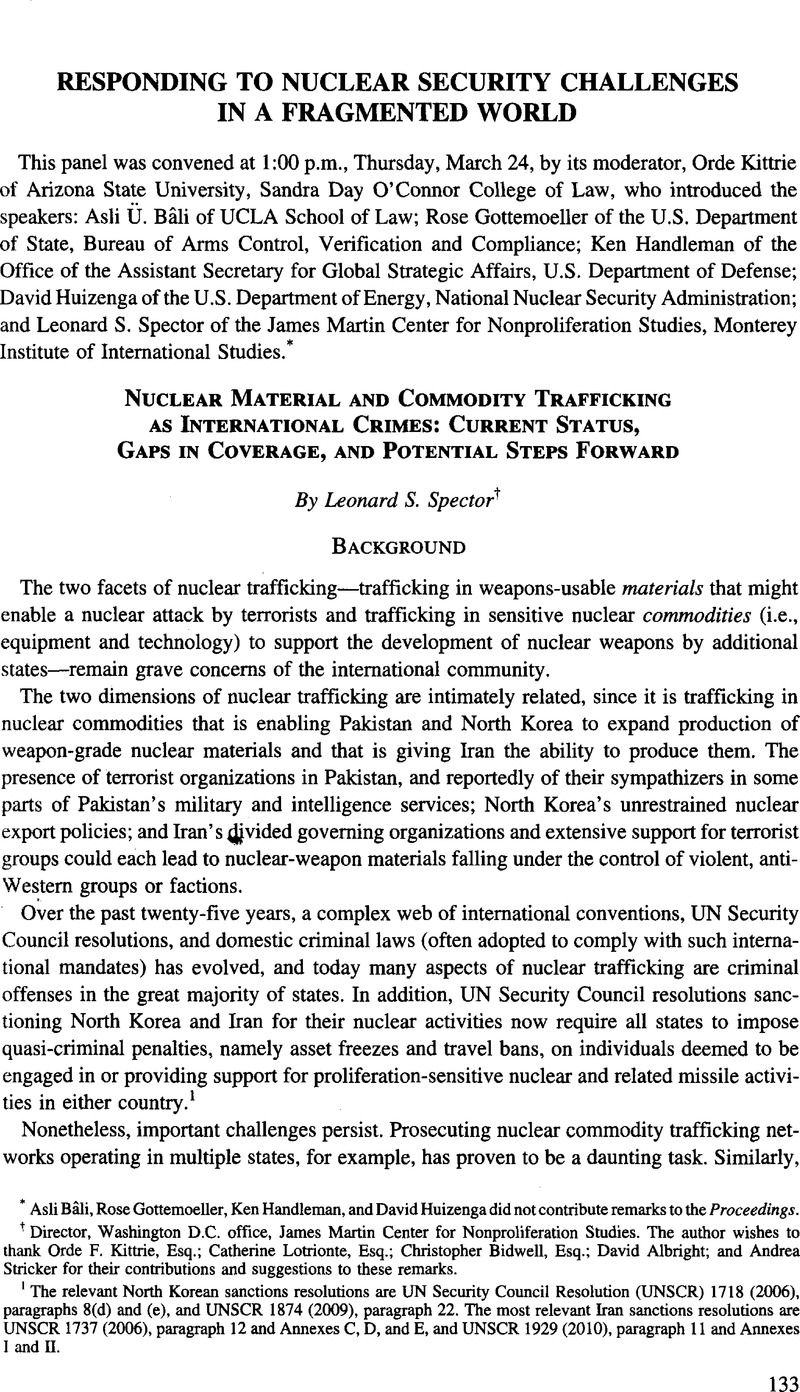No CrossRef data available.
Article contents
Nuclear Material and Commodity Trafficking as International Crimes: Current Status, Gaps in Coverage, and Potential Steps Forward
Published online by Cambridge University Press: 28 February 2017
Abstract

- Type
- Responding to Nuclear Security Challenges in a Fragmented World
- Information
- Copyright
- Copyright © American Society of International Law 2011
References
1 The relevant North Korean sanctions resolutions are UN Security Council Resolution (UNSCR) 1718 (2006), paragraphs 8(d) and (e), and UNSCR 1874 (2009), paragraph 22. The most relevant Iran sanctions resolutions are UNSCR 1737 (2006), paragraph 12 and Annexes C, D, and E, and UNSCR 1929 (2010), paragraph 11 and Annexes I and II.
2 As used here, the term “nuclear material” refers to fissile material usable for nuclear weapons and other nuclear materials that might be processed to be suitable for such use. The term does not include radioactive substances that might be used in a radiological dispersal device or “dirty bomb.”
3 See International Convention for the Suppression of Acts of Nuclear Terrorism, G.A. Res. 59/290, opened for signature Dec. 14, 2005 (entry into force July 7, 2007) (76 parties, 61 signed but not ratified); Convention on the Physical Protection of Nuclear Material, opened for signature Mar. 3, 1980 (entry into force Feb. 8, 1987) (145 parties, one signed but not ratified); 2005 Amendment to the Convention on the Physical Protection of Nuclear Material, opened for ratification Sept. 6, 2005 (45 ratifications, 0 signatures without ratification; ratification of two-thirds of parties needed for entry into force).
4 Although most commentary on the Convention focuses on its requirement for the physical protection of civilian nuclear materials in international transit, the Convention also contains provisions criminalizing misappropriation of such materials within the territory of individual parties. See Convention on the Physical Protection of Nuclear Material, arts. 2.2, 7, 8. These offenses are further elaborated in the 2005 amendment to the convention. See 2005 Amendment, especially art. 9.
5 See note 1.
6 Time has not permitted investigation of the details of sanctions arrangements of the other states listed here.
7 See International Convention for the Suppression of Acts of Nuclear Terrorism, arts. 9-15.




